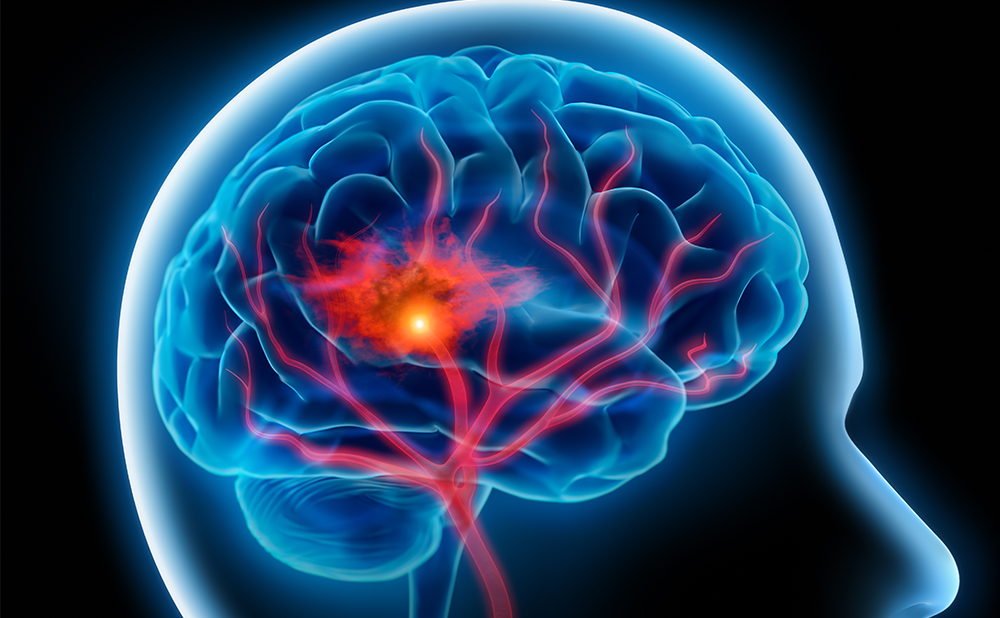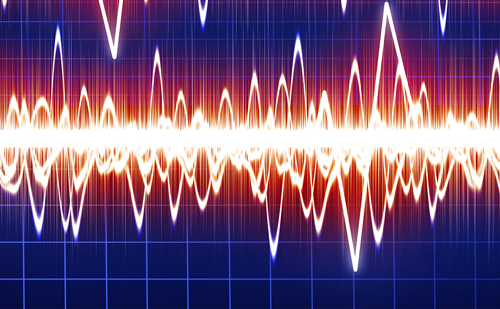Advantages and Disadvantages of DBS
DBS has many advantages over other surgical approaches to PD. It is a reversible procedure that allows the option for discontinuation for any reason, including better therapies. Many patients prefer this therapy over ‘lesions’.With stimulation the brain can be stimulated on both sides with relative safety, unlike lesion therapy. Settings can be adjusted as often as needed for desired results, and the efficacy of DBS in PD and essential tremor is comparable and perhaps even better than lesion therapy (if used bilaterally).At present, DBS is US Food and Drug Administration (FDA)-approved for essential tremor and PD and has received a Humanitarian Device Exemption (HDE) approval for the treatment of another movement disorder – dystonia.
Ablative procedures, such as unilateral pallidotomy can be performed safely and effectively.2 Some groups believe unilateral pallidotomy to be more effective in improving the motor symptoms of PD, compared with bilateral subthalamic nucleus (STN) stimulation, but a randomized trial comparing the two showed that DBS was more efficacious.3 It is not surprising that a unilateral lesioning procedure (or any unilateral procedure) would be less effective when compared with bilateral DBS, and it may be more fair to compare unilateral pallidotomy with unilateral DBS (which has not been carried out in a large clinical trial to date). Ablative surgery has some advantages over DBS including no requirement for DBS programming, and no long-term infections. Additionally, there are no hardware-related complications. Lesion therapy is costeffective, particularly in countries where DBS cannot be offered.4 Additionally, there are now several studies showing the safety and efficacy of bilateral STN lesions.5–9 There is a need for direct comparison trials between lesion and DBS; however, these trials are unlikely to be performed as most patients prefer nonablative therapy. Future considerations may also include lesion on one side of the brain and DBS on the contralateral side. The relative merits of this mixed lesion-DBS approach have not been carefully investigated. What Has Been Learned About the Targets?
Subthalmic Nucleus Compared with Globus Pallidus Internus DBS
It is still not known what the best target for DBS in PD is. There is a consensus that STN and globus pallidus internus (GPi) are the preferred targets, and ventralis intermedius of the thalamus (VIM) is preferred for essential tremor. While bilateral STN stimulation is currently the most widely used treatment, there remains no definitive consensus as to which target is better for which symptom.10 Historically, GPi has been the preferred target because of the success with pallidotomies and pallidal DBS.11 A number of important studies 12–14 focused attention on STN. Numerous studies emerged soon after about the success of STN stimulation.15 With preference for STN growing, very few studies have been published about GPi stimulation, making the comparison difficult.When reports of the serious cognitive side effects of STN stimulation emerged, alternate targets including GPi were again widely reconsidered. Several large multicenter studies comparing the two targets were under way at the time of press. There are no available well balanced head to head trials comparing the two targets. Both sites are effective in improving the cardinal symptoms of PD (bradykinesias, rigidity, tremors and gait dysfunction), and both sites are efficacious in decreasing motor fluctuations and dyskinesias. It has been argued by several groups that bilateral STN stimulation may be superior to GPi in improving the motor scores, tremor and bradykinesia;12,13 however, other studies have shown the difference to be either the same 16 or not significant.17 STN stimulation is thought to be superior to GPi in reducing levodopa dosage, although all published studies have failed to implement standard dosage reduction strategies. This could be a significant advantage in patients having medicationrelated side effects or issues, something that is commonly seen in advanced PD. STN stimulation seems to be associated with a surprising number of mood, cognitive and behavioral side effects.Though such side effects have also been reported with GPi stimulation, the difference between the two sites may eventually prove significant.17 Suicide has also been reported to be associated with the STN target.18 It is also posited that GPi DBS has a more direct antidyskinetic effect and this may in itself be an advantage, particularly as PD progresses and more medications may be needed.19 It is very important that head to head studies between STN and GPi be conducted with long-term follow-up to determine which target is better for which symptom, and for which patient. There are several on-going studies including the Veterans Administration (VA) Cooperative Study on Antihypertensive Agents Parkinsons and DBS, and the University of Florida study Effects of DBS on Mood and Cognition in Parkinson’s Disease.
What Has Been Learned About Screening Patients for DBS?
Over the past decade it has been shown that the most important step in DBS surgery is identifying the right candidates. In general, potential candidates have idiopathic PD, and not a Parkinsonian plus syndrome (multi-system atrophy, corticobasal ganglionic degeneration, diffuse Lewy body disease, progressive supra-nuclear palsy and other causes of secondary Parkinsonism). The candidate should have had an excellent response to levodopa and the disease should have advanced to the stage where symptoms are refractory to medication changes. These medication refractory symptoms include wearing off phenomena, on-off fluctuations, and dyskinesias.The patient should have no or minimal cognitive dysfunction. Medication refractoriness should be judged only after a medication optimization period under the care of an experienced practitioner. This issue of cognitive dysfunction can become complicated, and is still unclear, as the more rigorous the criteria for surgery, the less candidates there will be.
We have additionally learned the importance of instilling realistic expectations of the surgery from the outset.20 The response of the DBS, at best, is going to be the best response from levodopa. DBS also has a powerful effect on smoothing out on/off fluctuations.Therefore, careful on/off Unified Parkinson Disease Rating Scale (UPDRS) ratings should be performed and heart to heart discussions undertaken between doctors and families.20 There may be certain circumstances where DBS will need to be carried out for one refractory symptom such as tremor or dyskinesia. The Importance of Triage Tools Suchas the Florida Surgical Questionnaire for PD for General Neurologists and Practitioners
Potential surgical candidates can be triaged by general neurologists and primary care physicians (PCPs) by using questionnaires such as the Florida Surgical Questionnaire for Parkinson Disease (FLASQ-PD) surgical questionnaire.21 This questionnaire is designed as a quick triage tool for practitioners to identify and refer potential DBS candidates to experienced centers. It gives the criteria for diagnosing probable idiopathic PD, identifies contraindications to the surgery, favorable and/or unfavorable characteristics, medication trials, and medication refractory symptoms. Patients are given a score, and can be re-evaluated or ‘re-FLASQed’ after optimization. Potential surgical candidates can then be referred to a movement disorders multidisciplinary team for a complete workup prior to further consideration for surgery. Methods such as the FLASQ-PD will aid in the post-FDA approval era of DBS to ensure the right candidates are receiving the operation.
The Complications of DBS
DBS, like other surgical procedures, has a complication rate that may be closely related to the experience and techniques of the neurosurgical team. These complications can be divided into procedure-related or device-related. Overall, the procedure-related complications occur in 5% to 10% of the cases. Some of these complications include intracerebral hemorrhage, infection, seizure, confusion, focal neurological signs (such as transient hemiparesis), paresthesias, abnormal eye movements, skin erosion, depression, worsening of speech, and worsening cognition.22–24 The one side effect that is being watched most carefully is suicide.18 The device-related complications include hardware problems that may lead to repeat surgery. These have included lead fractures (3% to 5%), lead migrations (5% to 14%), and neurostimulator malfunction (2% to 8%).22 A case of brain necrosis has also been reported after undergoing diathermy.25 Of course the greatest risk of therapy is that the device does not provide perceived pre-operative benefits, and in a number of cases this may be due to lead misplacement.26,27
The Mechanism of Action
The exact mechanism of action for DBS is not yet known. Based on animal models and human electrophysiologic monitoring, there are a number of theories.These include:
- high frequency stimulation inhibiting the target nucleus by presynaptic release of inhibitory neurotransmitters in axons, with low frequency stimulation, leading to stimulation (activation) of the target nucleus;
- disruption or stabilization of the neuronal firing patterns in the target area by inducing decay at downstream synapses;
- plastic changes occurring in the downstream networks as a result of chronic stimulation; and 28
- high frequency stimulation leading to desynchronization of the network oscillations at the target nucleus.
Other possible mechanisms of action include depolarization blockade, channel blocking, synaptic failure, anterograde effects, retrograde effects, effects on non-neuronal cells, and effects on local concentrations of ions or neuroactive molecules, and neuronal energy depletion.29 The clinical result could well be the sum of many of these effects. Ultimately, the simplest explanation is that DBS inhibit cells and excites fibers, and that functionally it creates an ‘informational lesion’.
The Future for DBS
In spite of the tremendous success of DBS in the past decade, its true potential in treating neurological and psychiatric diseases is not likely to have been realized. The long-desired ability to stimulate specific regions of the brain with positive outcomes has finally become a reality. Additionally, the concept of ‘brain–machine interface’ is now a practical reality. The therapeutic potential of this field will be enormous. Bilateral GPi and thalamic stimulation are now being used to treat primary dystonias.30 In patients with medically refractory epilepsy, stimulation of the anterior nucleus34 and centromedian nucleus of the thalamus,35 hippocampus,36 and STN 37 has met with promising clinical results. Posterior hypothalamus has been proposed as a possible target for the treatment of cluster headaches,38 and preliminary data is very positive.39 Patients with Tourette’s syndrome have responded to DBS.40,41 DBS is being actively investigated in the treatment of central pain. New avenues are opening in the field of stimulation. Motor cortex stimulation has now been used with success in the treatment of neuropathic facial pain, 42 deafferentation pain,43 and complex regional pain syndrome.44 Other potentially useful and emerging targets over the last decade for the treatment of central pain have included the ventral posterior lateral (VPL) nucleus of the thalamus,45 internal capsule,46 peri-aqueductal grey, raphe nuclei,47 and anterior cingulate cortex.48 DBS has also met with varying degrees of success in the treatment of some psychiatric disorders. Stimulation of the anterior limb of the internal capsule has resulted in clinical benefit in patients with obsessive compulsive disorder (OCD).49,50 DBS has also shown promise in the treatment of medically refractory depression.50,51
Improvements in DBS in the Near Future
In order to improve current systems, there are many avenues that may be studied. Currently, DBS requires utilization of a tremendous amount of resources. Improvements in screening and standardization of techniques will be needed.There remains no consensus on best DBS practices and this will be a challenge of the next decade. In the near future, it should be possible to remotely program the DBS devices by using telephone lines and the Internet, as is being carried out for cardiac pacemakers. Rechargeable batteries will eliminate the need for the three- to five-year battery replacements. New designs in electrode arrays will be helpful in minimizing complications such as lead fractures.
Conclusion
In conclusion, DBS appears to be a treatment that will expand its indications and push novel innovations forward resulting in the better care of patients.As a better understanding of its uses and limitations is gained, the list of its indications will grow and the list of refinements and improvements will increase commensurately.














